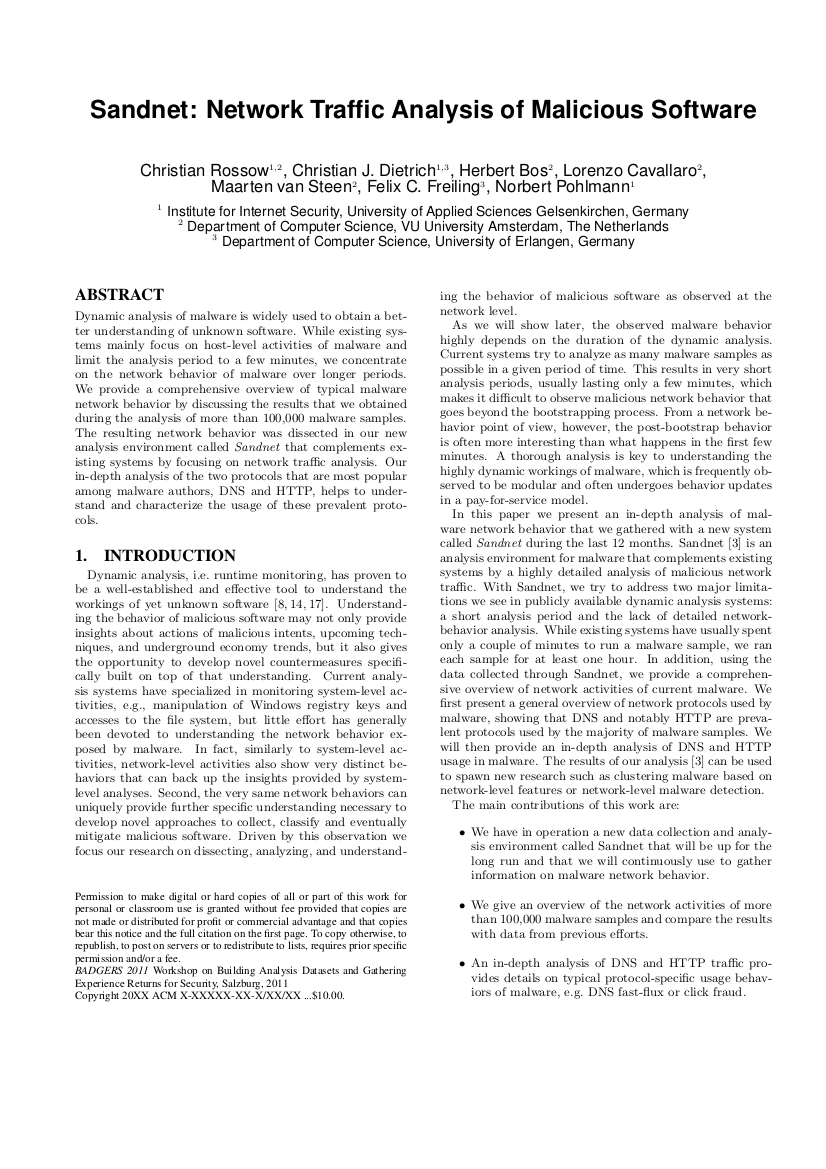Sandnet: Network Traffic Analysis of Malicious Software - Prof. Dr. Norbert Pohlmann
Sandnet: Network Traffic Analysis of Malicious Software | |
 | C. Rossow, C. Dietrich, H. Bos, L. Cavallaro, M. van Steen, F. Freiling, N. Pohlmann:, Dynamic analysis of malware is widely used to obtain a better understanding of unknown software. While existing systems mainly focus on host-level activities of malware and limit the analysis period to a few minutes, we concentrate on the network behavior of malware over longer periods. We provide a comprehensive overview of typical malware network behavior by discussing the results that we obtained during the analysis of more than 100,000 malware samples. The resulting network behavior was dissected in our new analysis environment called Sandnet that complements existing systems by focusing on network traffic analysis. Our Dynamic analysis, i.e. runtime monitoring, has proven to be a well-established and effective tool to understand the workings of yet unknown software [8, 14, 17]. Understanding the behavior of malicious software may not only provide insights about actions of malicious intents, upcoming techniques, and underground economy trends, but it also gives the opportunity to develop novel countermeasures specifically built on top of that understanding. Current analysis systems have specialized in monitoring system-level activities, e.g., manipulation of Windows registry keys and accesses to the file system, but little effort has generally been devoted to understanding the network behavior exposed by malware. In fact, similarly to system-level activities, network-level activities also show very distinct behaviors that can back up the insights provided by systemlevel analyses. Second, the very same network behaviors can uniquely provide further specific understanding necessary to develop novel approaches to collect, classify and eventually mitigate malicious software. Driven by this observation we focus our research on dissecting, analyzing, and understanding the behavior of malicious software as observed at the kostenlos downloaden |
 | |



